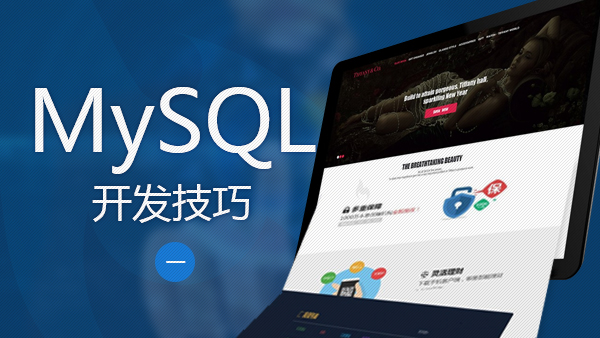前言:
mybatis在持久层框架中还是比较火的,一般项目都是基于ssm。虽然mybatis可以直接在xml中通过SQL语句操作数据库,很是灵活。但正其操作都要通过SQL语句进行,就必须写大量的xml文件,很是麻烦。mybatis-plus就很好的解决了这个问题。
一、mybatis-plus简介:
Mybatis-Plus(简称MP)是一个 Mybatis 的增强工具,在 Mybatis 的基础上只做增强不做改变,为简化开发、提高效率而生。这是官方给的定义,关于mybatis-plus的更多介绍及特性,可以参考mybatis-plus官网。那么它是怎么增强的呢?其实就是它已经封装好了一些crud方法,我们不需要再写xml了,直接调用这些方法就行,就类似于JPA。
二、spring整合mybatis-plus:
正如官方所说,mybatis-plus在mybatis的基础上只做增强不做改变,因此其与spring的整合亦非常简单。只需把mybatis的依赖换成mybatis-plus的依赖,再把sqlSessionFactory换成mybatis-plus的即可。接下来看具体操作:
1、pom.xml:
核心依赖如下:
<!-- spring --> <dependency> <groupId>org.springframework</groupId> <artifactId>spring-context</artifactId> <version>4.3.14.RELEASE</version> </dependency> <dependency> <groupId>org.springframework</groupId> <artifactId>spring-orm</artifactId> <version>4.3.14.RELEASE</version> </dependency> <dependency> <groupId>org.springframework</groupId> <artifactId>spring-test</artifactId> <version>4.3.14.RELEASE</version> <scope>test</scope> </dependency> <!-- mp 依赖 --> <dependency> <groupId>com.baomidou</groupId> <artifactId>mybatis-plus</artifactId> <version>2.3</version> </dependency>
注意:这些是核心依赖,本项目还用到了mysql驱动、c3p0、日志(slf4j-api,slf4j-log4j2)、lombok。集成mybatis-plus要把mybatis、mybatis-spring去掉,避免冲突;lombok是一个工具,添加了这个依赖,开发工具再安装Lombok插件,就可以使用它了,最常用的用法就是在实体类中使用它的@Data注解,这样实体类就不用写set、get、toString等方法了。关于Lombok的更多用法,请自行百度。
2、log4j.xml:
<?xml version="1.0" encoding="UTF-8" ?><!DOCTYPE log4j:configuration SYSTEM "log4j.dtd"><log4j:configuration xmlns:log4j="http://jakarta.apache.org/log4j/">
<appender name="STDOUT" class="org.apache.log4j.ConsoleAppender">
<param name="Encoding" value="UTF-8" />
<layout class="org.apache.log4j.PatternLayout">
<param name="ConversionPattern" value="%-5p %d{MM-dd
HH:mm:ss,SSS} %m (%F:%L) \n" />
</layout>
</appender>
<logger name="java.sql">
<level value="debug" />
</logger>
<logger name="org.apache.ibatis">
<level value="info" />
</logger>
<root>
<level value="debug" />
<appender-ref ref="STDOUT" />
</root></log4j:configuration>3、jdbc.properties:
jdbc.driver=com.mysql.jdbc.Driver jdbc.url=jdbc:mysql:///数据库名?useUnicode=true&characterEncoding=utf8 jdbc.username=#jdbc.password=#
4、mybatis-config.xml:
<?xml version="1.0" encoding="UTF-8"?><!DOCTYPE configuration PUBLIC "-//mybatis.org//DTD Config 3.0//EN" "http://mybatis.org/dtd/mybatis-3-config.dtd"><configuration></configuration>
注:因为是与spring整合,所有mybatis-plus的大部分都写在spring的配置文件中,这里定义一个空的mybatis-config.xml即可。
5、spring-dao.xml:
<?xml version="1.0" encoding="UTF-8"?> <beans xmlns="http://www.springframework.org/schema/beans"
xmlns:xsi="http://www.w3.org/2001/XMLSchema-instance"
xmlns:p="http://www.springframework.org/schema/p"
xmlns:aop="http://www.springframework.org/schema/aop"
xmlns:context="http://www.springframework.org/schema/context"
xmlns:jee="http://www.springframework.org/schema/jee"
xmlns:tx="http://www.springframework.org/schema/tx"
xsi:schemaLocation="
http://www.springframework.org/schema/aop http://www.springframework.org/schema/aop/spring-aop-4.0.xsd
http://www.springframework.org/schema/beans http://www.springframework.org/schema/beans/spring-beans-4.0.xsd
http://www.springframework.org/schema/context http://www.springframework.org/schema/context/spring-context-4.0.xsd
http://www.springframework.org/schema/jee http://www.springframework.org/schema/jee/spring-jee-4.0.xsd
http://www.springframework.org/schema/tx http://www.springframework.org/schema/tx/spring-tx-4.0.xsd">
<!-- 配置整合mybatis-plus过程 -->
<!-- 1、配置数据库相关参数properties的属性:${url} -->
<context:property-placeholder location="classpath:jdbc.properties" />
<!-- 2、配置数据库连接池 -->
<bean id="dataSource" class="com.mchange.v2.c3p0.ComboPooledDataSource">
<property name="driverClass" value="${jdbc.driver}"/>
<property name="jdbcUrl" value="${jdbc.url}"/>
<property name="user" value="${jdbc.username}"/>
<property name="password" value="${jdbc.password}"/>
</bean>
<!-- mybatis的sqlsessionFactorybean:org.mybatis.spring.SqlSessionFactoryBean-->
<!-- 3、配置mybatis-plus的sqlSessionFactory -->
<bean id="sqlSessionFactory" class="com.baomidou.mybatisplus.spring.MybatisSqlSessionFactoryBean">
<property name="dataSource" ref="dataSource" />
<property name="configLocation" value="classpath:mybatis-config.xml"/>
<property name="typeAliasesPackage" value="com.zhu.mybatisplus.entity"/>
</bean>
<!-- 4、DAO接口所在包名,Spring会自动查找其下的类 -->
<bean class="org.mybatis.spring.mapper.MapperScannerConfigurer">
<property name="basePackage" value="com.zhu.mybatisplus.dao" />
<property name="sqlSessionFactoryBeanName" value="sqlSessionFactory"/>
</bean> </beans>6、entity:
@Data@TableName(value = "tb_employee")//指定表名public class Employee { //value与数据库主键列名一致,若实体类属性名与表主键列名一致可省略value
@TableId(value = "id",type = IdType.AUTO)//指定自增策略
private Integer id; //若没有开启驼峰命名,或者表中列名不符合驼峰规则,可通过该注解指定数据库表中的列名,exist标明数据表中有没有对应列
@TableField(value = "last_name",exist = true) private String lastName; private String email; private Integer gender; private Integer age;
}7、mapper:
public interface EmplopyeeDao extends BaseMapper<Employee> {
}这样就完成了mybatis-plus与spring的整合。首先是把mybatis和mybatis-spring依赖换成mybatis-plus的依赖,然后把sqlsessionfactory换成mybatis-plus的,然后实体类中添加@TableName、@TableId等注解,最后mapper继承BaseMapper即可。
8、测试:
@RunWith(SpringJUnit4ClassRunner.class)@ContextConfiguration({"classpath:spring/spring-dao.xml"})public class test { @Autowired
private DataSource dataSource; @Test
public void testDataSource() throws SQLException {
System.out.println(dataSource.getConnection());
}
}运行该junit,可输出获取到的连接,说明整合没问题:

image.png
本文所有代码本人均亲自测试过,本文涉及代码又较多,为了不影响篇幅,故非必要处不再截图。接下来的所有操作都是基于此整合好的项目。
三、mp的通用crud:
需求:
存在一张 tb_employee 表,且已有对应的实体类 Employee,实现tb_employee 表的 CRUD 操作我们需要做什么呢?
基于 Mybatis:
需要编写 EmployeeMapper 接口,并在 EmployeeMapper.xml 映射文件中手动编写 CRUD 方法对应的sql语句。
基于 MP:
只需要创建 EmployeeMapper 接口, 并继承 BaseMapper 接口。
我们已经有了Employee、tb_employee了,并且EmployeeDao也继承了BaseMapper了,接下来就使用crud方法。
1、insert操作:
@RunWith(SpringJUnit4ClassRunner.class)@ContextConfiguration({"classpath:spring/spring-dao.xml"})public class test { @Autowired
private EmplopyeeDao emplopyeeDao; @Test
public void testInsert(){
Employee employee = new Employee();
employee.setLastName("东方不败");
employee.setEmail("dfbb@163.com");
employee.setGender(1);
employee.setAge(20);
emplopyeeDao.insert(employee); //mybatisplus会自动把当前插入对象在数据库中的id写回到该实体中
System.out.println(employee.getId());
}
}执行添加操作,直接调用insert方法传入实体即可。
2、update操作:
@Testpublic void testUpdate(){
Employee employee = new Employee();
employee.setId(1);
employee.setLastName("更新测试"); //emplopyeeDao.updateById(employee);//根据id进行更新,没有传值的属性就不会更新
emplopyeeDao.updateAllColumnById(employee);//根据id进行更新,没传值的属性就更新为null}注:注意这两个update操作的区别,updateById方法,没有传值的字段不会进行更新,比如只传入了lastName,那么age、gender等属性就会保留原来的值;updateAllColumnById方法,顾名思义,会更新所有的列,没有传值的列会更新为null。
3、select操作:
(1)、根据id查询:
Employee employee = emplopyeeDao.selectById(1);
(2)、根据条件查询一条数据:
Employee employeeCondition = new Employee();
employeeCondition.setId(1);
employeeCondition.setLastName("更新测试");//若是数据库中符合传入的条件的记录有多条,那就不能用这个方法,会报错Employee employee = emplopyeeDao.selectOne(employeeCondition);
作者:贪挽懒月
链接:https://www.jianshu.com/p/ceb1df475021


 随时随地看视频
随时随地看视频




